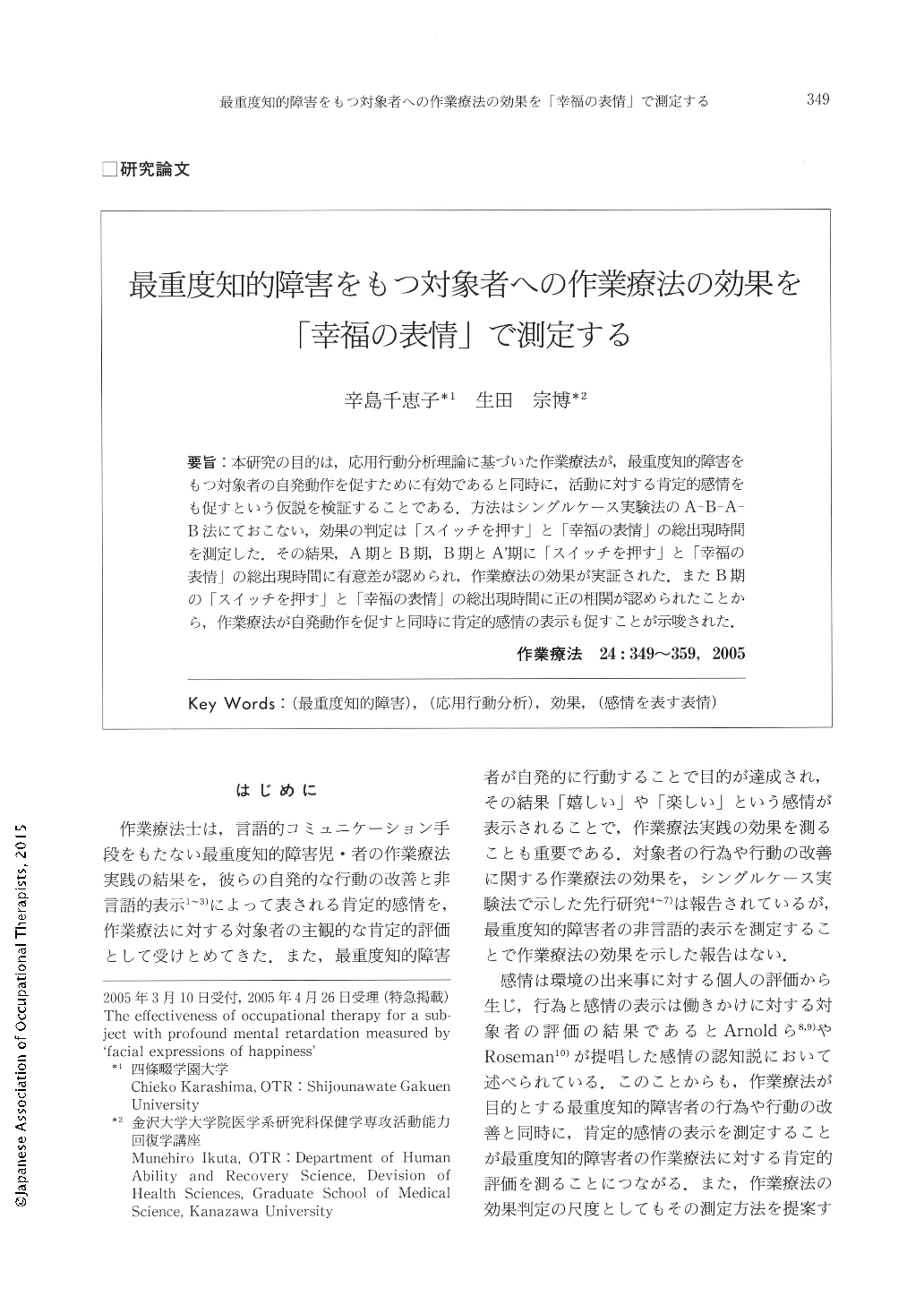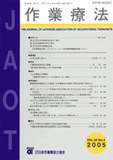Japanese
English
- 販売していません
- Abstract 文献概要
- 1ページ目 Look Inside
- 参考文献 Reference
- サイト内被引用 Cited by
要旨:本研究の目的は,応用行動分析理論に基づいた作業療法が,最重度知的障害をもつ対象者の自発動作を促すために有効であると同時に,活動に対する肯定的感情をも促すという仮説を検証することである.方法はシングルケース実験法のA-B-A-B法にておこない,効果の判定は「スイッチを押す」と「幸福の表情」の総出現時間を測定した.その結果,A期とB期,B期とA'期に「スイッチを押す」と「幸福の表情」の総出現時間に有意差が認められ,作業療法の効果が実証された.またB期の「スイッチを押す」と「幸福の表情」の総出現時間に正の相関が認められたことから,作業療法が自発動作を促すと同時に肯定的感情の表示も促すことが示唆された.
The purpose of this study was to examine a hypothesis that occupational therapy, based on theories of applied behavioral analysis, facilitates positive emotions such as happiness and joy towards activities of a subject with profound mental retardation, as well as facilitates volitional behaviors. The subject, a 27 year-old woman, lived in a facility for the disabled. The research methodology was based on the A-B-A-B design of a single case experiment. The effectiveness was measured by the total amount of time during which the subject 'turned the switch on' and exhibited 'facial expressions of happiness'. In phase A we intervened with passive assistance, and in phase B we intervened with occupational therapy based on theories of applied behavioral analysis. To measure, ① demonstration ② occurrence of volitional behaviors ③ to put on the table or release a figure of Winnie the Pooh, which rotated itself with a switch on, were videotaped, and still pictures were taken every 0.5 seconds by a DV gate still. The results were calculated as follows : the number of still pictures upon which both collaborators agreed × 0.5 seconds. The amount of time for 5 sessions was set as the total amount of time per day. As a result, 1. in the total amount of time when the subject 'turned the switch on' and exhibited 'facial expressions of happiness', there was a significant difference (p<0.05) between phases A and B and also, between phases A' and B'. This outcome demonstrated the effectiveness of occupational therapy based on theories of applied behavioral analysis in phase B. 2. Because there was a positive correlation in phase B between the total amount of time for 'turning the switch on' and the total amount of time for exhibiting 'facial expressions of happiness', occupational therapy based on theories of applied behavioral analysis facilitated the subject's volitional behavior of 'turning the switch on' and facilitated positive expressions towards the behavior as well. 3. A positive evaluation toward occupational therapy based on theories of applied behavioral analysis in phase B was made by the subject.

Copyright © 2005, Japanese Association of Occupational Therapists. All rights reserved.


